Answered step by step
Verified Expert Solution
Question
1 Approved Answer
Answer according to table provided!! Use the following information for the Exercises below. [The following information applies to the questions displayed below.] Laker Company reported
Answer according to table provided!!
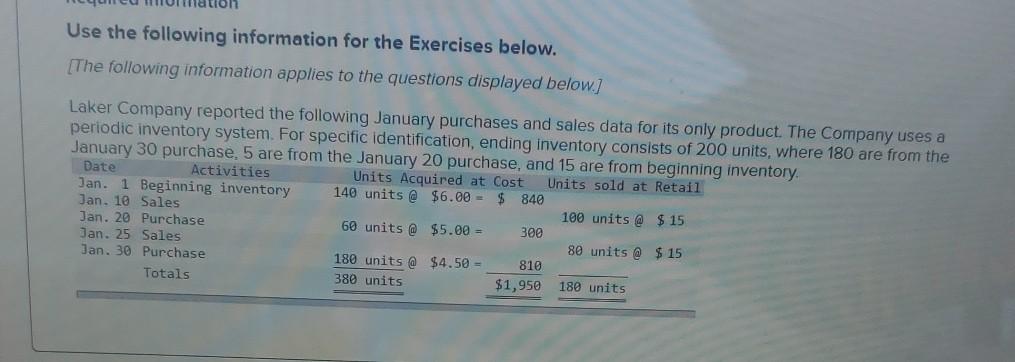
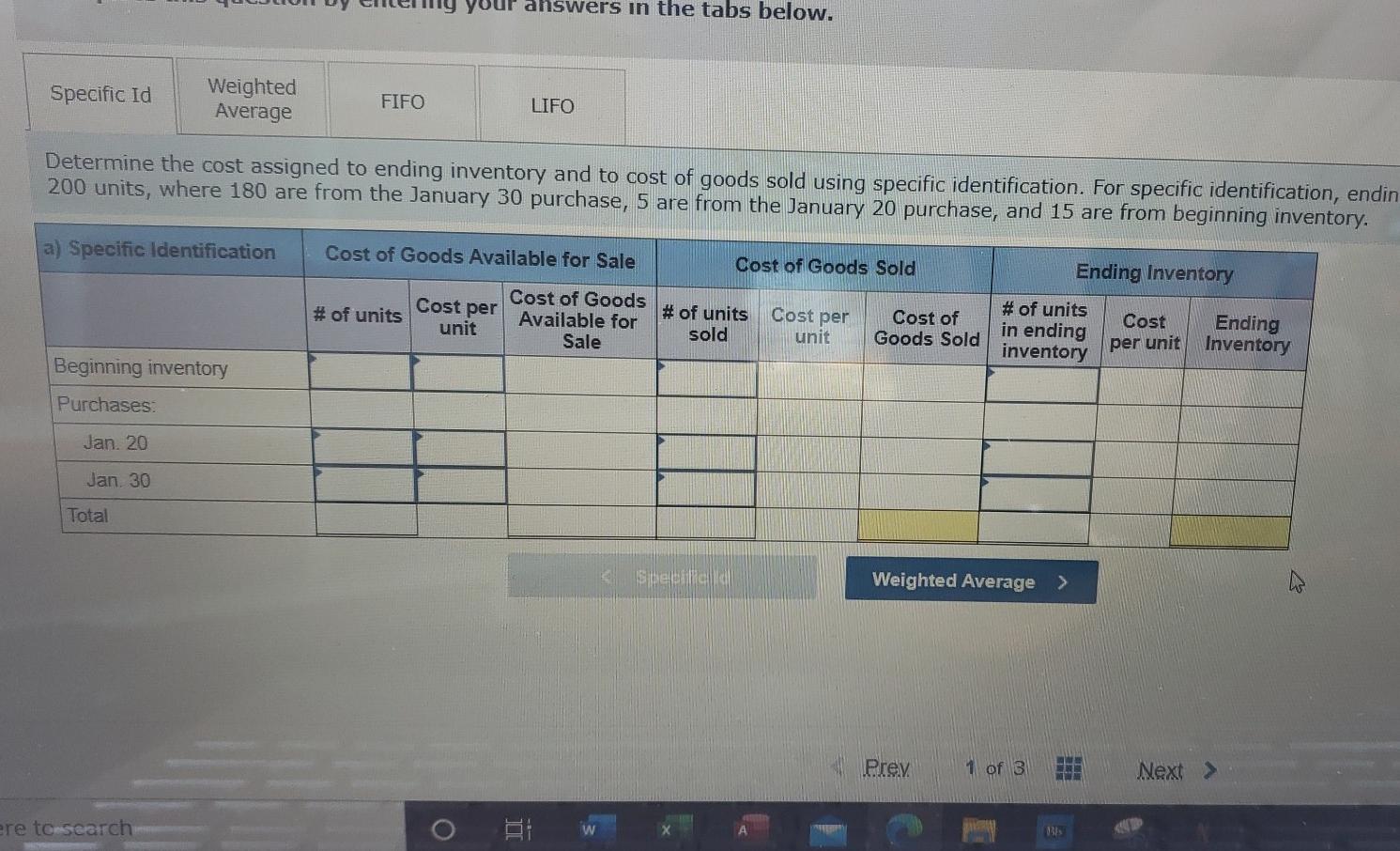
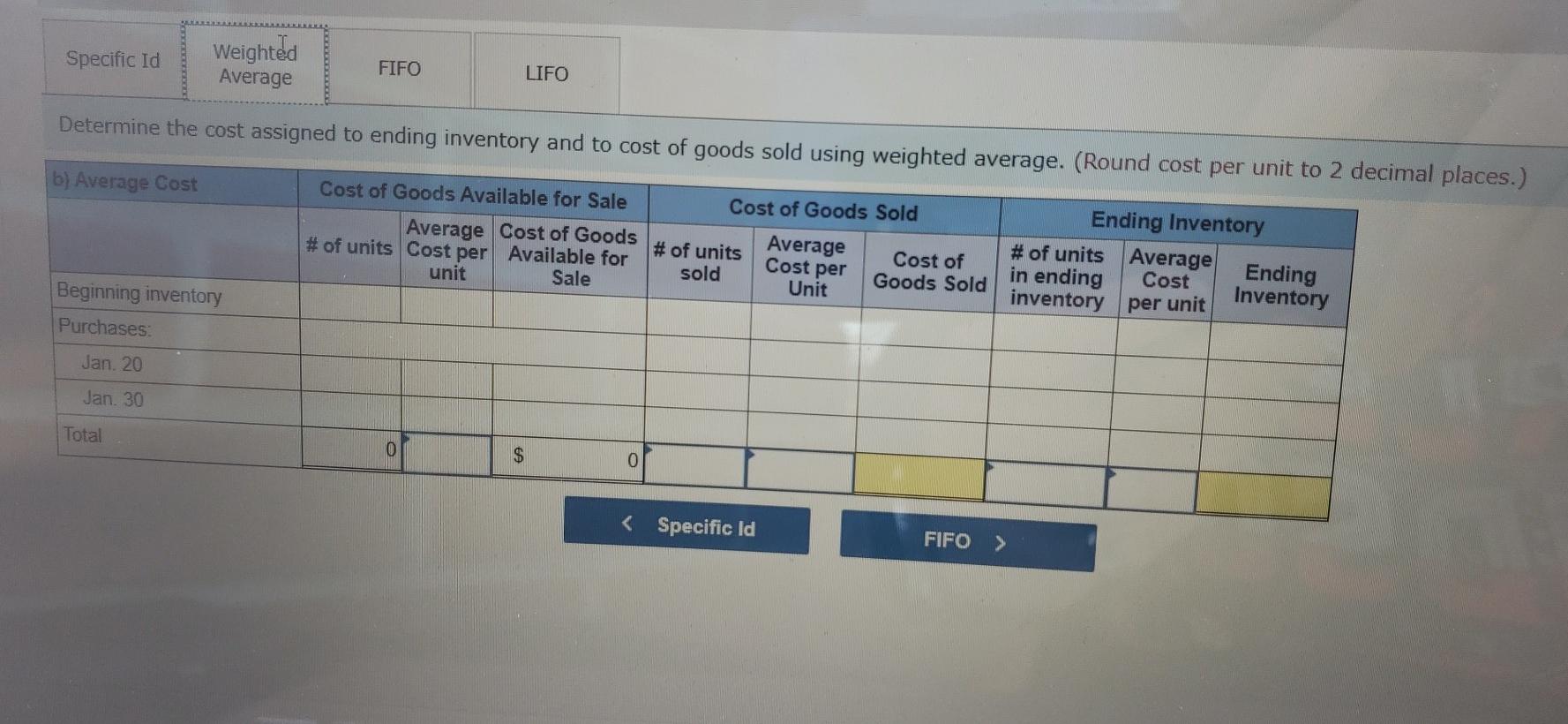
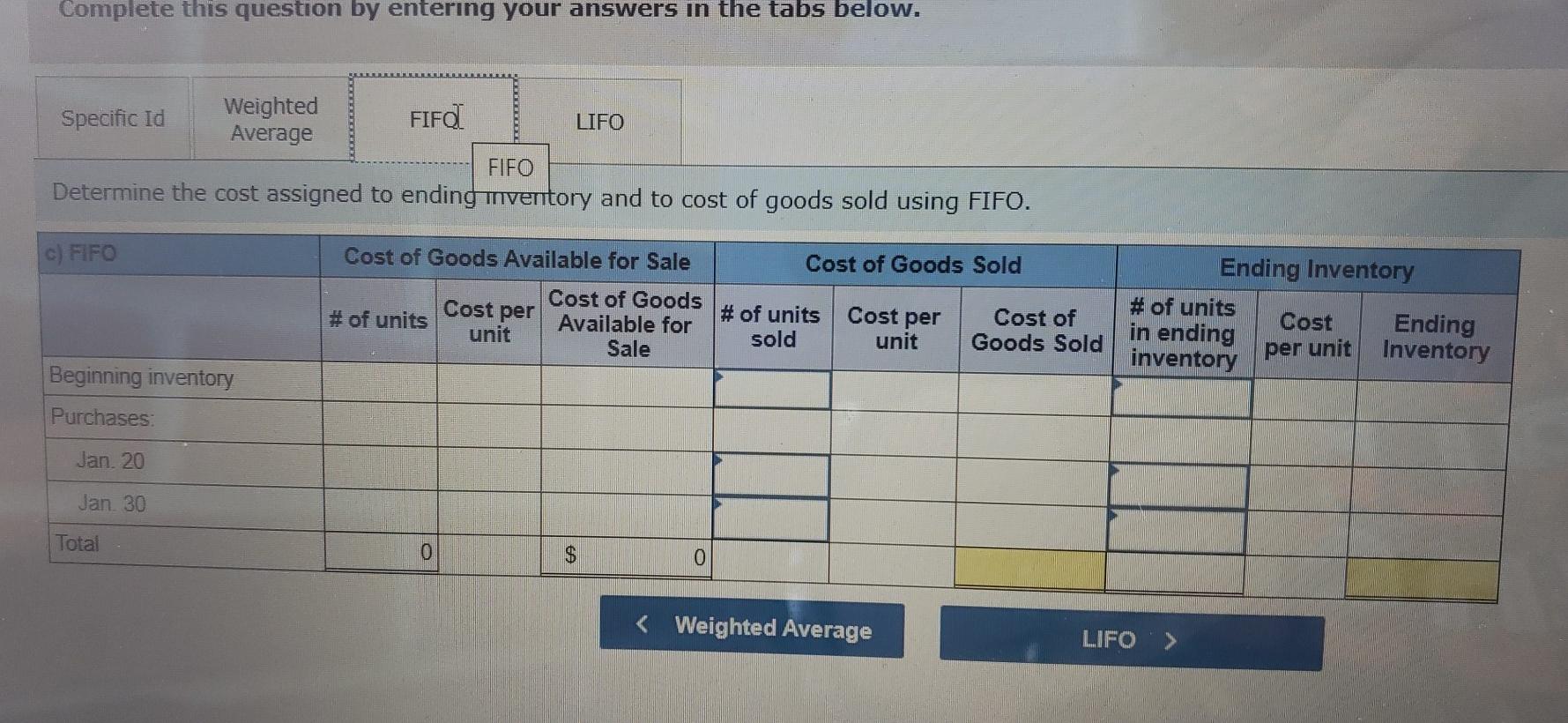
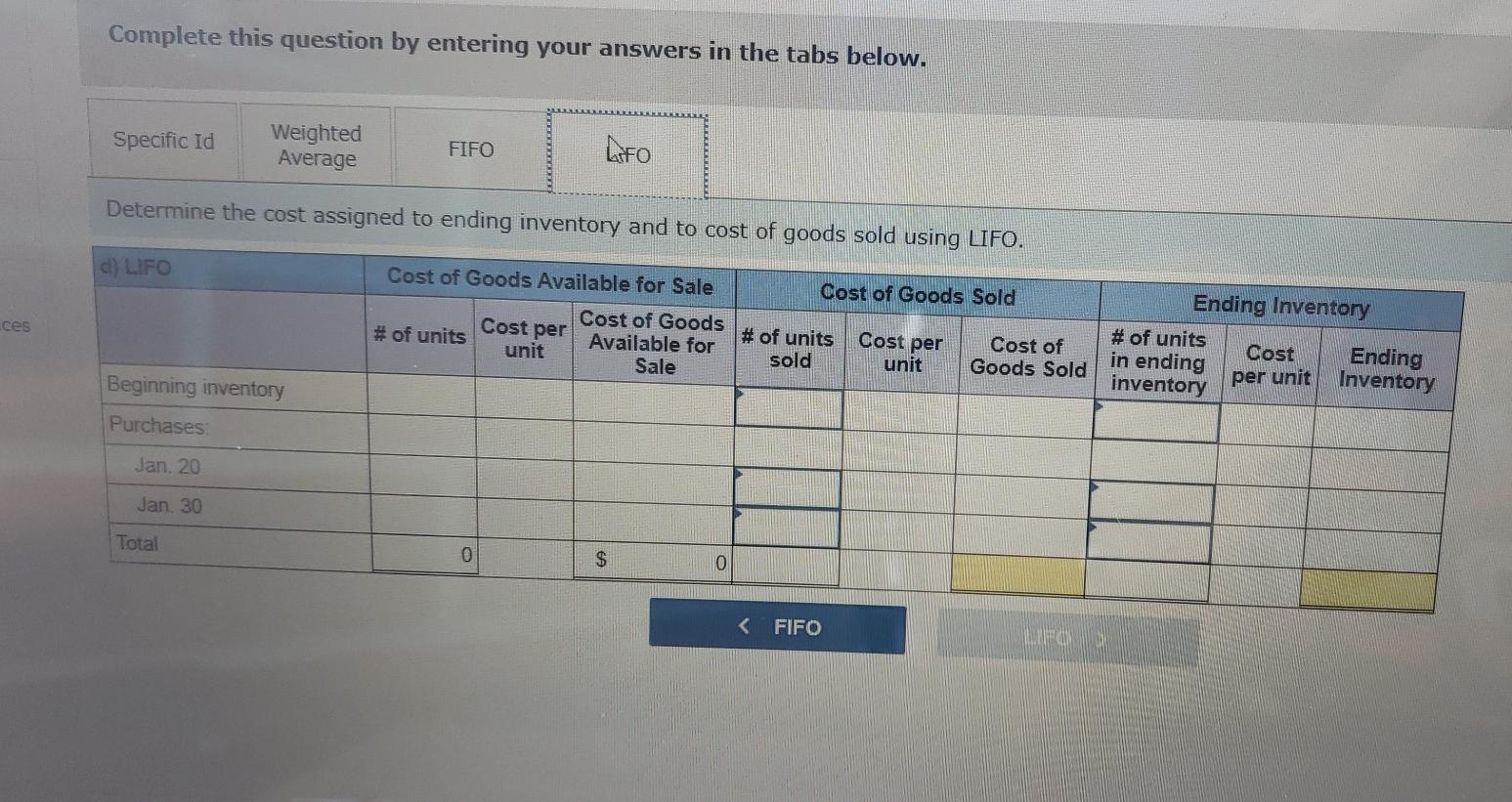
Use the following information for the Exercises below. [The following information applies to the questions displayed below.] Laker Company reported the following January purchases and sales data for its only product. The Company uses a periodic inventory system. For specific identification, ending inventory consists of 200 units, where 180 are from the January 30 purchase. 5 are from the January 20 purchase, and 15 are from beginning inventory Date Activities Units Acquired at Cost Units sold at Retail Jan. 1 Beginning inventory 140 units @ $6.00 = $ 840 Jan. 18 Sales 100 units @ $ 15 Jan. 20 Purchase 60 units @ $5.00 = 300 Jan. 25 Sales 80 units @ $ 15 Jan. 30 Purchase 180 units @ $4.50 - 810 Totals 380 units $1,950 180 units ahswers in the tabs below. Specific Id Weighted Average FIFO LIFO Determine the cost assigned to ending inventory and to cost of goods sold using specific identification. For specific identification, endin 200 units, where 180 are from the January 30 purchase, 5 are from the January 20 purchase, and 15 are from beginning inventory. a) Specific Identification Cost of Goods Available for Sale Cost of Goods Sold # of units Cost per Cost of Goods Available for Sale # of units sold Cost per unit Ending Inventory # of units Cost Ending in ending per unit Inventory inventory Cost of Goods Sold unit Beginning inventory Purchases: Jan. 20 Jan. 30 Total Sibel Weighted Average > Prey 1 of 3 BUL Next ere to search Specific Id Weighted Average FIFO LIFO Determine the cost assigned to ending inventory and to cost of goods sold using weighted average. (Round cost per unit to 2 decimal places.) b) Average Cost Cost of Goods Sold Cost of Goods Available for Sale Average Cost of Goods # of units Cost per Available for unit Sale Average # of units sold Cost per Cost of Goods Sold Ending Inventory # of units Average in ending Ending Cost inventory per unit Inventory Unit Beginning inventory Purchases Jan. 20 Jan. 30 Total 0 $
Step by Step Solution
There are 3 Steps involved in it
Step: 1

Get Instant Access to Expert-Tailored Solutions
See step-by-step solutions with expert insights and AI powered tools for academic success
Step: 2

Step: 3

Ace Your Homework with AI
Get the answers you need in no time with our AI-driven, step-by-step assistance
Get Started


